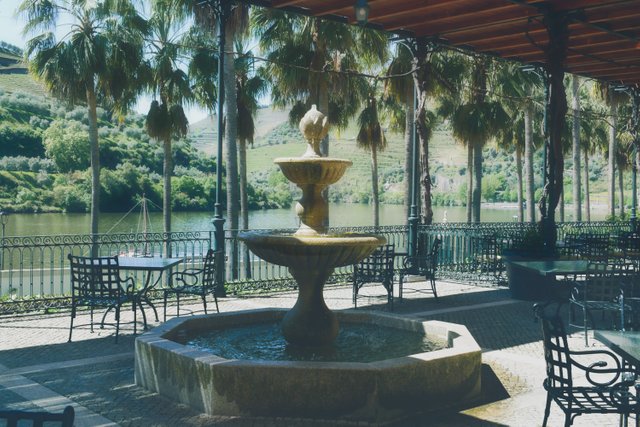📷Curiosities about the Azores Archipelago
Italy Community
✅ 1832 | The Duke of Bragança in the Azores and the Liberal Expedition
The man who, on September 7, 1822, proclaimed the so-called "Grito do Ipiranga," marking the beginning of Brazil’s historic path to independence and leading to his acclamation as Emperor of Brazil, would later face opposition and, on April 7, 1831, abdicated his throne and decided to return to Europe.
As Emperor of Brazil, the Duke of Bragança—also known as D. Pedro de Alcântara—had lost his right to the Portuguese throne and could not be crowned as D. Pedro IV, successor to his father, King João VI. When the king died in 1826, the regency was initially held by his eldest daughter. However, after extensive negotiations, Infante D. Miguel returned from exile, swore allegiance to the Constitutional Charter, married his niece D. Maria da Glória, and assumed the regency until she reached adulthood.
But D. Miguel soon violated his commitments and reimposed absolutist rule, prompting a liberal military revolt that was defeated—except on Terceira Island. The Duke of Bragança believed that the Portuguese throne rightfully belonged to his daughter D. Maria da Glória, then just twelve years old, and decided to fight for that right. Leaving Brazil, he traveled to France to organize a military expedition to defeat his brother D. Miguel’s absolutist regime and restore his daughter’s claim to the throne.
He arrived in Cherbourg on June 12, 1831, and later traveled to England to secure funding, rally Portuguese liberals in exile, acquire ships, and recruit mercenaries. On February 10, 1832, he set sail from the French port of Belle Île for the Azores with a small fleet that included the frigates Rainha de Portugal, D. Maria II, and the corvette Amélia.
Arrival in the Azores
On February 22, 1832, the Duke of Bragança arrived in Ponta Delgada aboard the frigate Rainha de Portugal. Adverse winds had prevented the fleet from anchoring at the port of Angra. He was received "with the greatest joy and possible magnificence by the garrison troops commanded by the Count of Alva, as well as by the authorities, clergy, nobility, and people of the island."
He spent eight days inspecting the city and its resources and, on March 2, departed Ponta Delgada for Angra after farewell cannon salutes from the castle of São Brás and the frigate.
He reached Angra on March 3, immediately forming a liberal government and appointing his military commanders: the Count of Vila Flor as commander-in-chief of the Azorean forces, and British officer George Rose Sartorius as admiral of the fleet. Declaring himself "Generalissimo of the land and sea forces," he stated his intent “to restore my august daughter to the throne and return the Constitutional Charter to the Portuguese people.”
After disembarking, he was met by “a countless number of citizens from all over the island, who, despite the heavy rain, came to greet the Duke of Bragança.” At the city entrance stood a triumphal arch, and beside it, the municipal council in full ceremony, ready to escort the duke to the cathedral under a canopy—an honor he declined, saying it was due only to his august daughter.
Festivities continued in the following days to celebrate “the arrival of Emperor D. Pedro to the Azorean capital,” with orders for a grand celebration and public illumination.
The Visit to Faial
On April 7, the Duke departed at dawn for Faial aboard the Superb, the first steamship to operate in Azorean waters. The residents of Faial eagerly awaited the hero they knew by reputation:
“On April 7, around 1 PM, a steamship appeared from the north—the first of its kind to reach these waters—and by 2 PM it was near the frigate Rainha de Portugal.”
He disembarked in the town of Horta at 4 PM. According to a later edition of O Fayalense, the duke stayed at the home of José Francisco da Terra Brum da Silveira, captain-major, along with his chaplain, wardrobe keeper, and physician. Other members of his entourage—including the Marquis of Loulé, Count of Vila Flor, Marquis of Fronteira, and Count of Ficalho—stayed at the residence of the French consul Sérgio Pereira Ribeiro, a man the Duke deeply esteemed.
That night, there was a Te Deum, followed by a ball at Terra Brum's residence. The next day included an official reception and another ball hosted by the captain-major. On April 9, he visited the arsenal and reviewed battalions of volunteers, sharpshooters, and artillery. That evening, he attended another ball at the American consul Charles William Dabney’s home.
On April 10, he visited the arsenal again and toured surrounding areas. He dined at the home of British consul Mr. Walker and attended a ball hosted by Dutch consul Mr. Lane. On the morning of April 11, he reviewed the 12th sharpshooters battalion and at 7 AM boarded the Superb, which soon set sail.
Preparing for the Expedition
This visit was part of preparations for the liberation expedition that would soon sail to mainland Portugal. It was also connected to organizing volunteer units in the Central Group islands and building a naval arsenal in Horta to support ships purchased in England. Socially, the visit was vibrant—Horta hosted four balls in just over 80 hours!
After leaving Horta, the Superb stopped at Velas on São Jorge Island, where “a large number of residents, officers, and the municipal council awaited in full ceremony.” The visit lasted two hours before the ship continued to Terceira Island, arriving around 8 PM on April 11.
On April 15, the Duke visited Praia and its fortifications—where the absolutist forces had been defeated on August 11, 1829.
On April 23, he departed for Ponta Delgada, where ships and arms for the expedition were beginning to arrive. However, due to slow progress, he returned to Terceira and Faial on May 24. By May 29, he was back in Ponta Delgada—thanks again to his steamship, Superb.
“Tireless and invincible against all obstacles from men and circumstances, he finally gathered on May 29 in Ponta Delgada the entire expeditionary force—7,500 well-armed men, ready to march toward their intended goal.”
The troops were largely composed of young liberal exiles, joined by island recruits, former Miguelite troops who had defected, and numerous mercenaries from across Europe.
The Liberal Expedition Departs
On June 27, 1832, the liberal expedition set sail for the Portuguese mainland in a convoy of 42 transport ships, escorted by two frigates and other vessels, including the corvette Amélia, which carried the Duke of Bragança.
D. Pedro had remained in the Azores from February 22 to June 27—just over four months, or exactly 125 days. Alongside the Count of Vila Flor and George Sartorius, he proved himself a dynamic organizer and a highly capable political and military leader. He traveled between the islands aboard the Superb, then a technological marvel.
On the eve of departure, D. Pedro addressed the Azoreans:
"Illustrious inhabitants of the Azores,
For more than three months I have lived among you, filled with admiration and gratitude for the sacrifices you have made and the loyalty you have shown to the Sacred Cause of My August Daughter. Now I must leave you and, at the head of the brave men who accompany me, go to overthrow the usurpation, restore the throne of Senhora D. Maria II, and establish the reign of law by reinstating the Government of the Charter, under which the Portuguese will once again enjoy the unity, peace, and justice so long denied by barbarism and despotism.
I leave you, faithful Azoreans, but I carry with me a vivid memory of your patriotism. I have also gained important knowledge of your land’s fertility and your industrious character.
Farewell, brave Azoreans. If a glorious mission separates me from you today, I am accompanied by the certainty that your love for justice and your commitment to the new institutions—whose benefits you are already beginning to enjoy—will preserve this noble archipelago, a classic land of Portuguese loyalty and the illustrious cradle of the Motherland’s regeneration."
— D. Pedro, Duke of Bragança
Landing at Mindelo and the Beginning of the Civil War
On July 7, 1832, the liberal expedition reached the coast near Pampelido, close to Mindelo and just north of Porto. The next day, the disembarkation began. On July 9, D. Pedro’s forces entered Porto unopposed. Thus began the civil war between liberal and absolutist forces.
About a year later, on July 24, 1833, the Duke of Terceira landed at Terreiro do Paço and took Lisbon. Four days later, the Duke of Bragança made a triumphant landing at the Navy Arsenal.
However, the civil war officially ended only on May 26, 1834, with the signing of the Convention of Évora Monte.
I am sharing photos of landscapes, moments and experiences. Nature and sea are the most visited themes in my photo collection, but any attention-grabbing aspect can be photographed. Hope you enjoy it...
| Category | #italy |
| Photo taken at | Douro Valley - Portugal |
)


Upvoted! Thank you for supporting witness @jswit.